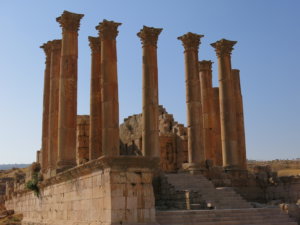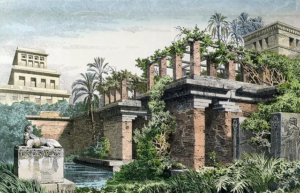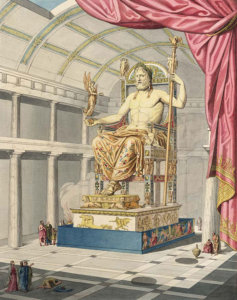Originally, the list detailing the wonders of the ancient world consisted solely of Greek constructions. However, after the initial list was lost, non-Greek monuments were featured in addition to some of the original pieces. Comprising this list are examples of human genius, artistry, imagination, intellect, and effort. From breathtaking works of art and horticulture to impressive structures designed to withstand centuries of wind and rain, the features on this list are considered wondrous for a reason. Even when they are destroyed, their foundations—and their legacies—remain.
Of course, these structures and other locations have endured over time, but most have not done so without incurring some damage. From enemy sieges and sabotage to harsh environmental conditions, many factors have contributed to the features’ erosion over time. Additionally, because of the beauty and cultural implications of these features in their era, they have been connected with displays of human jealousy, hatred, and destruction.
Though in many ways the items on this list are composed of mundane things such as stones, silt, and vegetation, they have been imbued with historical and societal relevance that compels us to regard them as the wonders of the ancient world.

The Temple of Artemis in Ephesus
This magnificent temple was constructed in the Greek architectural fashion, boasting a number of impeccable columns to support the building’s ornate roof. Considerably larger than all other temples in Greece, the Temple of Artemis was soon regarded as a Wonder of the World.
The goddess worshipped in this temple differs from traditional Greek mythology, however. Where the Greek Artemis is the goddess of the hunt and the moon, the Artemis of Ephesus is a goddess of fertility; often depicted adorned with a collection of eggs about her torso, Artemis Ephesus was highly regarded and worshipped.
Because of the temple’s impressive build and the people’s reverence, it became a common target for attacks. In the fourth century B.C.E., the temple was destroyed by a deliberate fire, and after being rebuilt, five hundred years later, the temple suffered from the Gothic invasion in 267 C.E. Once more, the temple was rebuilt, but it only survived until 401 C.E. when Christian forces demolished the structure. Today, the foundation and a solitary column remain, but the impressive presence and historical significance of the temple remains apparent today.

The Hanging Gardens of Babylon
Of the seven wonders, the hanging gardens of Babylon are unique for the fact that many scholars continually doubt their existence. They are believed to have been built by the great king of the Neo-Babylonian Empire, Nebuchadnezzar II. Ancient writers described the incredible gardens as being self-watering and full of exotic flora that climbed up nearly 75 feet of terraces.
The location of the hanging gardens is widely disputed; in recent years, some scholars and academics have proposed their findings that suggest the gardens were not in Babylon but were instead in Nineveh or other distant regions. It is difficult to pinpoint the approximate location of these fabled gardens due to the fact that, according to written history, they were destroyed by an earthquake shortly after the first century of the current era.

The Statue of Zeus in Olympia
Famed Athenian sculptor Phidias crafted this legendary sculpture of Zeus; the finished product was placed in the Temple of Zeus in Olympia. The size of the sculpture was immense, reaching 40 feet at its highest point. Depicted sitting down, the sculpted Zeus nearly brushed his head against the ceiling of the temple. In addition to the majesty and the might of the statue’s size, Phidias’ creation was adorned with ivory and gold, and it was also accompanied by two sphinxes as the armrests, all ornately carved.
It is rumored that, when Phidias requested Zeus’ approval, the temple was struck by lighting.
For more than 800 years, this statue resided in the temple, watching over its patrons. However, Christians convinced the Roman emperor to close the temple in the fourth century of the current era. The statue was then relocated to Constantinople; shortly after, it is believed that the statue was destroyed in a fire there.
The marvels of the ancient world were so highly regarded often because they demonstrated the boundless potential for human creativity, innovation, and skill. Depicting deities in their likeness at an impossible scale, nurturing gardens with foreign plants and advanced technology, and constructing a temple so massive and impressive, people rebuilt it time and time again; these are examples of the inspirations such wondrous features invoked in the people of the past.
Though many of the wonders of the ancient world are nearly entirely lost, their legacies remain. They continue to influence and inspire us even today.
Next month, we’ll visit the remaining four wonders of the ancient world to further explore how man-made constructions can inspire wonder, awe, and even fear.
___
Jorge J. Perez is an attorney in South Florida. He is a self-professed history buff. Visit JorgeJPerez.net often to learn more.

